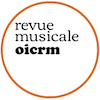 Vient de paraître : « Probing Gordon Mumma’s Studio Heuristic through a Digital Recreation of Mesa (1966) », par Jonathan Goldman (membre de l’OICRM), Contemporary Music Review, vol. 39, no 6, 2020, p. 734-757, DOI: 10.1080/07494467.2020.1863009.
Vient de paraître : « Probing Gordon Mumma’s Studio Heuristic through a Digital Recreation of Mesa (1966) », par Jonathan Goldman (membre de l’OICRM), Contemporary Music Review, vol. 39, no 6, 2020, p. 734-757, DOI: 10.1080/07494467.2020.1863009.
« Gordon Mumma (b. 1935) composed and performed music with live electronics alone or in collaboration with such central figures as John Cage, David Tudor, or Robert Ashley. This activity, closely linked to the American experimentalist tradition, grew out of his first youthful electronic essays on the University of Michigan campus, his work in Milton Cohen’s Space Theater beginning in 1957, and then at the ONCE festival from 1961. It was in Ann Arbor, Michigan that Mumma set up his first electronic music home studio, a pioneering effort that was so innovative that Mumma would publish an article on home studio building in the Journal of the Audio Engineering Society in 1964. This paper traces Mumma’s studio heuristic by reporting on the results of a digital recreation project by the author, in collaboration with Francis Lecavalier (programming) and Ofer Pelz (electronic performance), of one of Mumma’s iconic live electronic works, Mesa (1966), for bandoneon and live electronics. By synthesising information culled from an electronics schematic diagram, two recordings of the work, the composer’s contemporaneous writings and published interviews, but most importantly, an email correspondence stretching over the two years that preceded the performance of Mesa at the Montreal New Musics Festival on 27 February 2017, the ‘DIY’ practices of this early live electronic creation come into focus. Mesa’s apparatus involves the following essential elements: 1) ring modulation 2) a gate matrix that only sends signals beyond a given threshold to the effects modules 3) four input channels consisting of two piezo microphones on either side of the bandoneon as well as 4) a corresponding quadraphonic output to four speakers. The author contends that in an open-ended creation like Mesa, the work’s ontology is coeval with the scope of its technical apparatus. »
Une version antérieure de ce texte a été publiée en français dans la Revue musicale OICRM.
